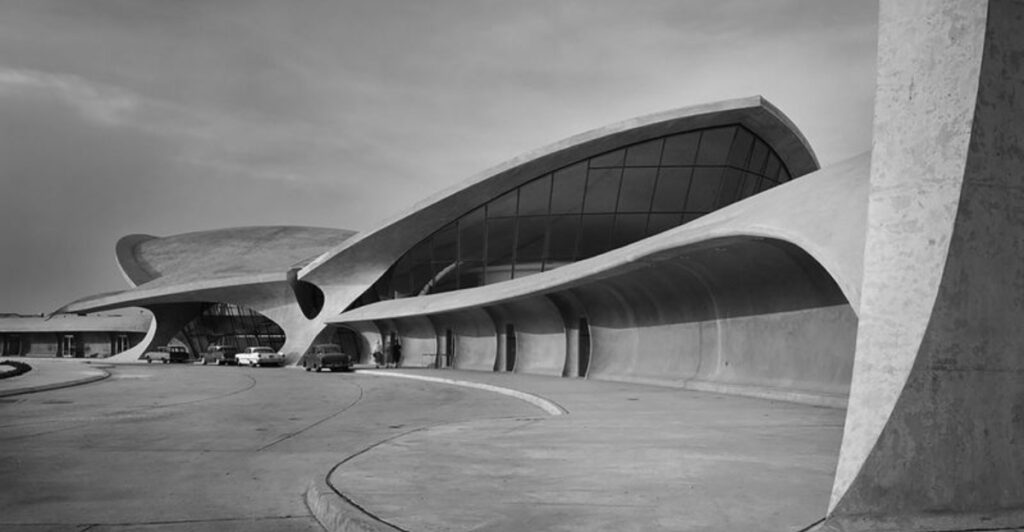The 1970s were a time of ambition and innovation, especially in the design of U.S. airports. During this era, architects embraced modernist principles and futuristic visions, creating transportation hubs that were as much about aesthetics and experience as they were about functionality. Designed with sweeping curves, expansive glass facades, and unique structural elements, these airports captured the essence of the jet age and the optimistic outlook on air travel’s future. This article explores twelve such airports that stood out for their cutting-edge designs, setting a new standard for what was possible in airport architecture.
1. Dulles International Airport (IAD, Virginia)
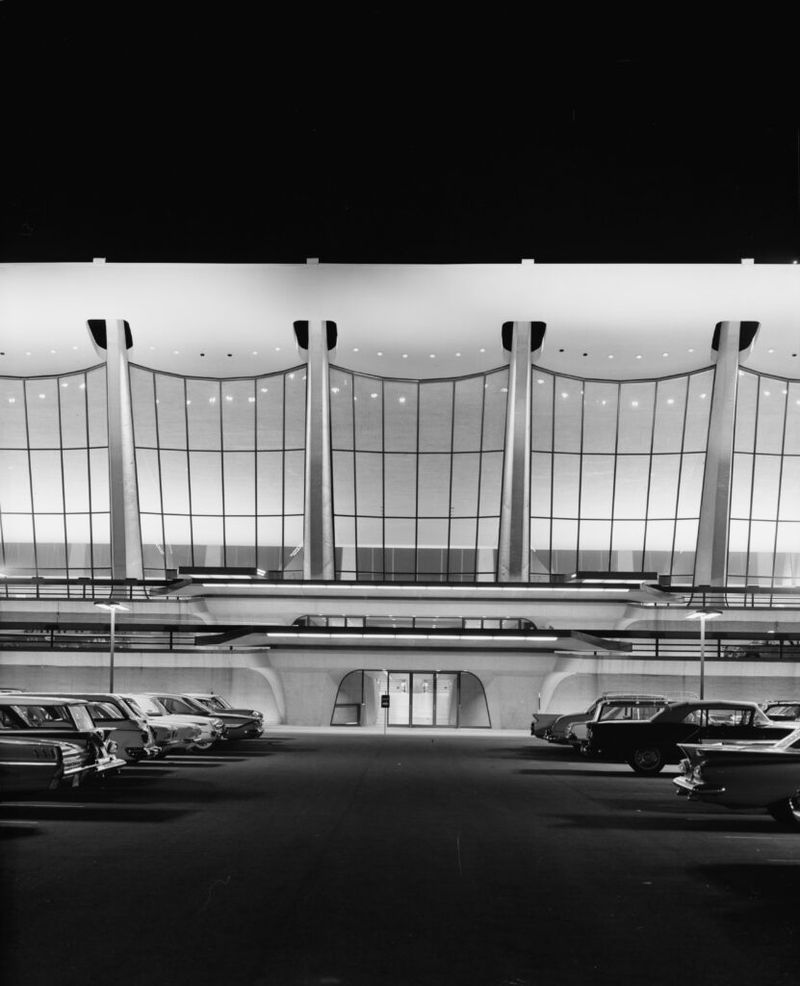
In Virginia, Dulles International Airport opened in 1962 as a masterpiece of design by Eero Saarinen. With its striking, graceful curves, Dulles embodied the futuristic optimism of its time. The terminal’s iconic roof seemed to lift the structure skyward, creating an atmosphere of grandeur and lightness. One of its most innovative features was the ‘mobile lounge’ transport system, which allowed passengers to embark and disembark with unmatched ease. This novel concept revolutionized airport design, providing an experience that was both functional and forward-thinking. Saarinen’s vision for Dulles extended beyond mere aesthetics; it was a holistic approach to air travel, emphasizing efficiency and convenience. The airport’s design has continued to influence architects and designers, standing as a testament to the era’s bold aspirations for the future of flight. Dulles remains a vital hub today, its architecture still admired for its elegance and ingenuity.
2. Tampa International Airport (TPA, Florida)
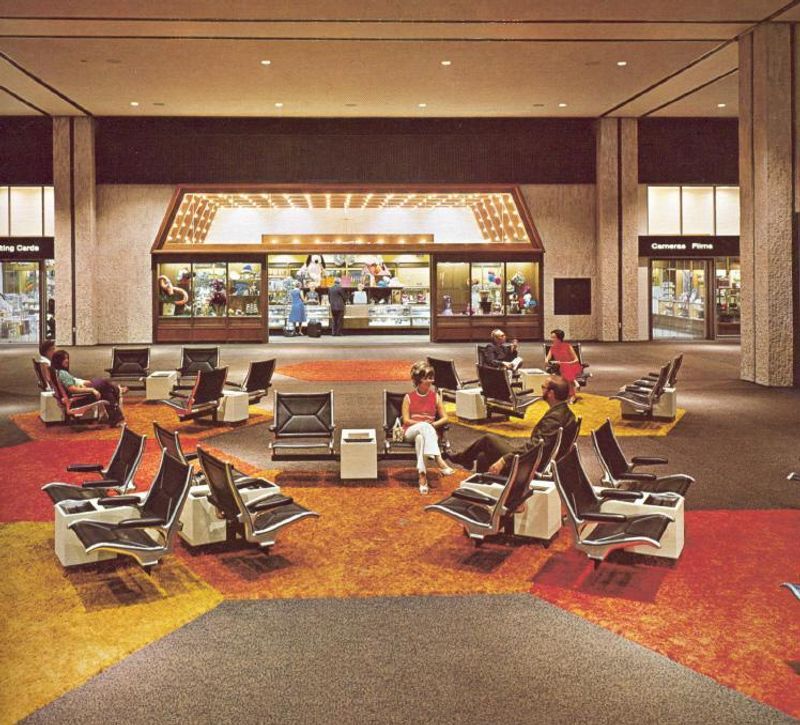
In 1971, Tampa International Airport introduced a revolutionary design concept that redefined passenger experience. The airport’s landside/airside configuration, conceived by the talented Jane Davis Doggett, offered a seamless transition from the curb to the gate. This innovative layout promoted efficiency, allowing travelers to navigate with ease and comfort. Bold, color-coded signage further enhanced the user-friendly environment, guiding passengers with clarity and style. The design’s modern aesthetic was a reflection of the era’s technological advancements and ambition. Tampa’s approach to airport architecture was not only practical but also infused with a sense of excitement, capturing the zeitgeist of the 1970s. By integrating functionality with visual appeal, Tampa International Airport set a new standard for airports worldwide. Its influence can still be seen in modern designs, where passenger experience remains a top priority. A true pioneer, Tampa’s design continues to inspire and impress.
3. Kansas City International Airport (MCI, Missouri)
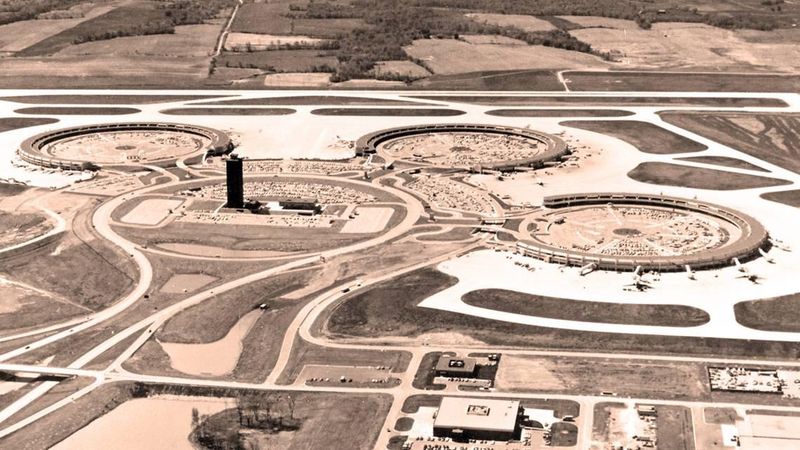
Kansas City International Airport, opened in 1972, was hailed as the ‘Airport of the Future.’ Its ring-shaped terminal and sleek modern lines embodied the jet age’s forward-thinking spirit. Designed to facilitate easy connections between gates, the airport’s layout was both innovative and efficient. This futuristic approach minimized walking distances and maximized convenience, creating an experience that was both user-friendly and visually striking. The architectural design reflected the optimism of the era, where air travel was seen as a gateway to global exploration and adventure. The airport’s cutting-edge features and aesthetic appeal made it an icon of modern travel. Its influence extended beyond Missouri, setting a precedent for airport design across the country and around the world. Today, Kansas City International Airport remains a testament to the visionary thinking that characterized the 1970s, continuing to serve as a vital hub for travelers.
4. Birmingham–Shuttlesworth International (BHM, Alabama)
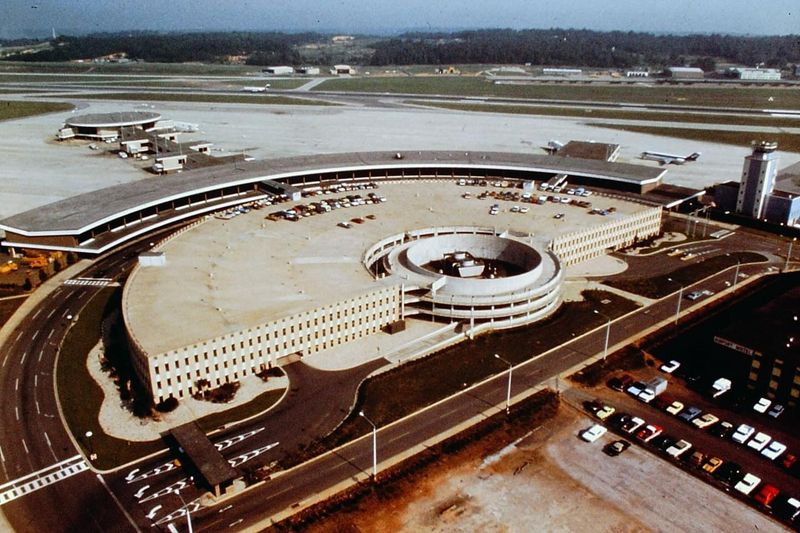
In Birmingham, Alabama, the Shuttlesworth International Airport’s 1974 terminal was a showcase of International-style architecture. Its clean lines and minimalist design set a tone of sophistication and modernity. Curved concourses and expansive glass curtain walls allowed natural light to flood the interior, creating an open and inviting atmosphere. Circular decorative motifs added a touch of elegance, complementing the building’s overall aesthetic. This design was more than a visual statement; it was a reflection of the era’s emphasis on technology and progress. The airport’s architecture was a harmonious blend of form and function, serving both the practical needs of travelers and the artistic aspirations of the time. Birmingham’s approach to airport design stood out for its originality and creativity, making it a model for future projects. The terminal’s distinctive style continues to be appreciated today, resonating with those who value innovation and elegance.
5. Minneapolis–Saint Paul (MSP, Minnesota — Old Terminal)
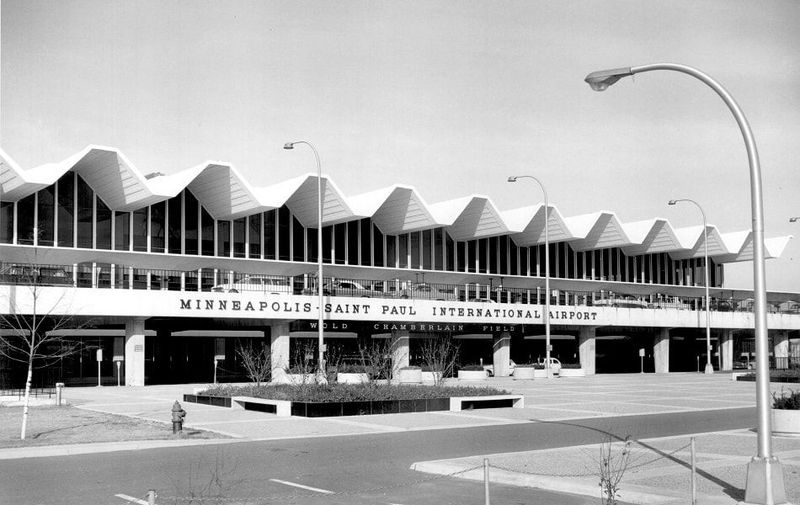
Minneapolis–Saint Paul International Airport’s old terminal was a symbol of 1970s modern travel. Its design featured Stapleton-style check-in halls and an open layout that conveyed both spaciousness and efficiency. The terminal’s architecture was reflective of the era’s technological advancements, offering travelers an experience that was both practical and visually appealing. The thoughtful design promoted easy navigation and comfort, making it a preferred choice for many. Often appearing in 1970s film sets, MSP’s architecture captured the imagination, representing a sleek and progressive vision of air travel. The old terminal’s distinctive features and forward-thinking design made it a standout among its contemporaries. Its influence extended beyond Minnesota, inspiring airport designs nationwide. Though the old terminal has since been replaced, its legacy lives on, remembered as a beacon of innovation and a testament to the optimistic spirit of the 1970s.
6. Stapleton Airport (Denver, Colorado — former)
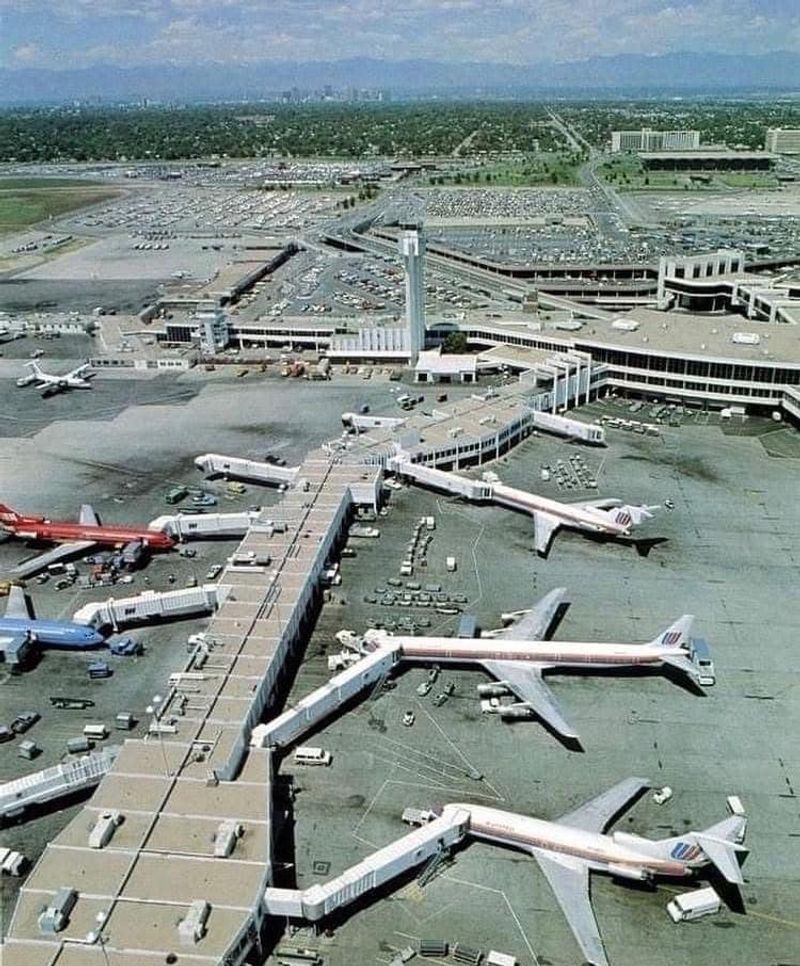
Stapleton Airport in Denver, Colorado, was a hallmark of 1970s airport design. Known for its minimalist lines and daylight-flooded concourses, the airport offered a vision of modernity and progress. The design emphasized openness and light, creating an inviting atmosphere for travelers. Stapleton’s architecture was a reflection of the era’s technological optimism, where design and function went hand in hand. The airport’s aesthetic appeal was matched by its efficiency, making it a favorite among frequent flyers. Though Stapleton has since been replaced by Denver International Airport, its legacy endures. The design principles that guided Stapleton continue to influence airport architecture today, where the balance between form and function remains a priority. Stapleton Airport’s innovative approach set a standard for what was possible, capturing the imagination of those who passed through its doors and leaving a lasting impression on the world of aviation.
7. Orlando Jetport at McCoy (now Orlando International MCO)
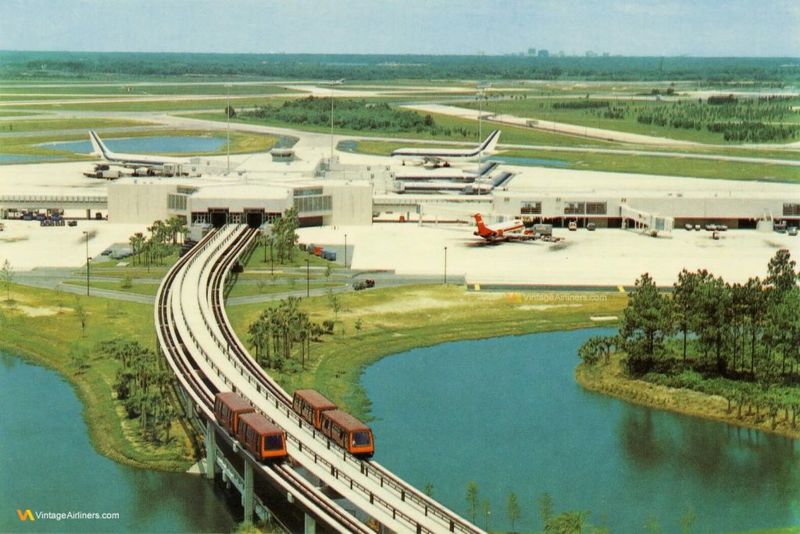
The Orlando Jetport at McCoy, now known as Orlando International Airport, opened in 1981 with a design that echoed the futuristic aspirations of its time. Influenced by the nearby Tampa design, Orlando’s layout emphasized efficiency and style. Its futuristic logo and modern elements reflected the era’s fascination with supersonic travel and technological advancement. The airport’s design was both practical and visionary, offering travelers a glimpse into the future of air travel. Orlando’s approach to airport architecture set it apart, capturing the imagination of those who passed through its gates. The emphasis on innovation and design excellence created an environment that was both functional and inspiring. Today, Orlando International Airport continues to serve as a model for modern airports, its legacy rooted in the bold vision of the past. The airport remains a vital hub, its design principles continuing to influence and inspire.
8. New York Idlewild (early JFK terminals)
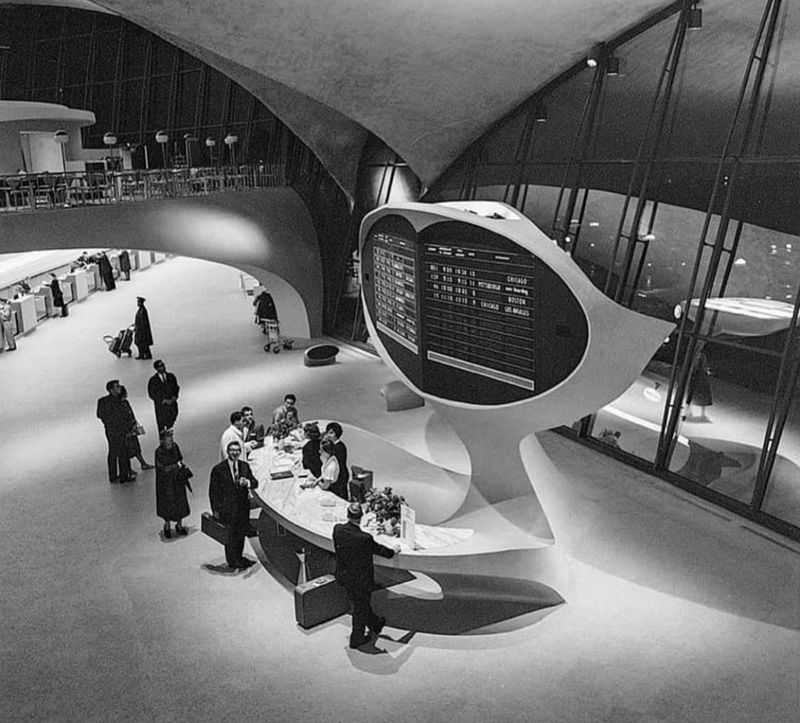
In the late 1950s and early 1960s, New York Idlewild Airport, now JFK, was at the forefront of modernist industrial design. Its terminals were lauded for their sleek, efficient, and forward-looking architecture, capturing the spirit of an age eager to embrace innovation. The design was both functional and aesthetically pleasing, offering travelers a seamless experience from arrival to departure. Known for its avant-garde approach, Idlewild set a new standard for airports worldwide, influencing designs for decades to come. The airport’s modernist principles emphasized simplicity and efficiency, reflecting the era’s technological advancements and ambitions. Idlewild was more than just an airport; it was a symbol of progress and a gateway to the world. Though the original terminals have evolved over the years, their legacy continues to inspire, reminding us of a time when air travel was synonymous with glamour and possibility.
9. Theme Building at Los Angeles International Airport (LAX)
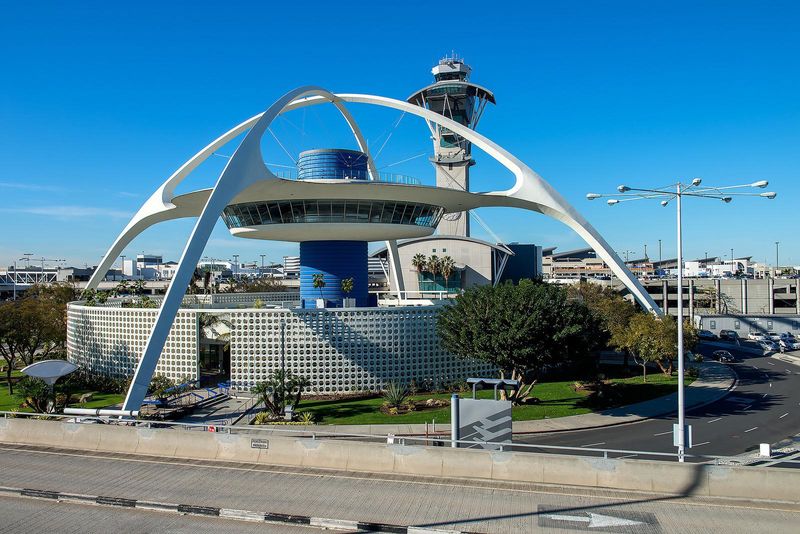
The Theme Building at Los Angeles International Airport (LAX) is an iconic piece of architecture that has captured the imagination since its construction in 1961. Designed in the Googie style, its futuristic appearance and unique design elements set it apart. The building houses a rotating restaurant and observation deck, offering panoramic views of the airport and surroundings. Its design is a tribute to the era’s fascination with space travel and modernity. The Theme Building’s distinctive architecture made it a symbol of LAX and a landmark in its own right. Its innovative design and playful style reflected the optimism of the 1960s, where anything seemed possible. Though the restaurant has since ceased operations, the building remains a popular attraction, admired for its architectural significance and historical value. The Theme Building continues to be a testament to the bold vision of its creators, standing as a reminder of a bygone era of design innovation.
10. St. Louis Lambert International Airport (Missouri)
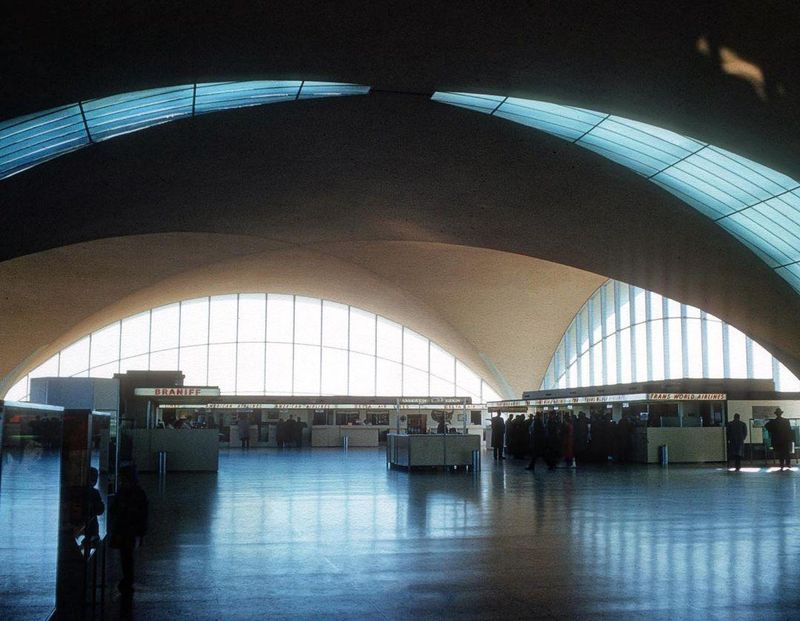
Designed by Minoru Yamasaki, the main terminal at St. Louis Lambert International Airport opened in 1956 with a striking arched design. This innovative architecture was both functional and futuristic, setting a precedent for airport design worldwide. The terminal’s sweeping curves and open spaces provided a sense of grandeur and elegance, capturing the spirit of an era eager to embrace new ideas. Yamasaki’s vision for the airport was not just about aesthetics; it was about creating an experience that was both efficient and inspiring. The design’s influence extended beyond St. Louis, inspiring architects and designers globally. Today, the terminal stands as a testament to the visionary thinking of its creator, admired for its bold design and enduring appeal. St. Louis Lambert Airport remains a vital hub, its architecture continuing to resonate with travelers and design enthusiasts alike, embodying the timeless allure of mid-century modern design.
11. Greater Pittsburgh Airport (Pennsylvania)
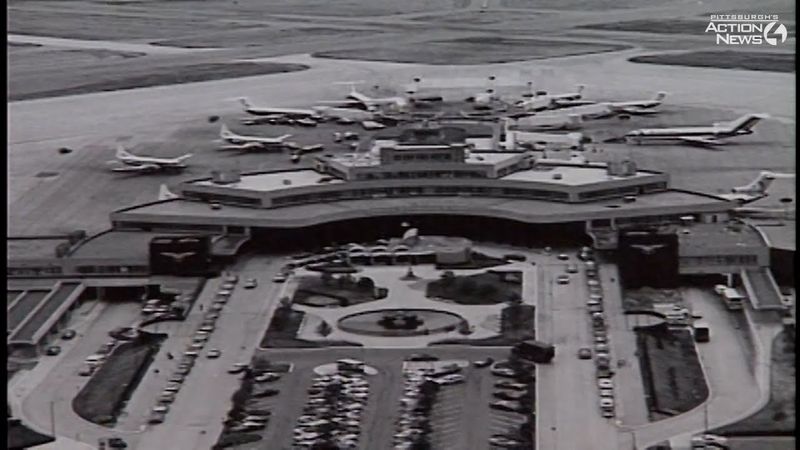
Opened in 1952, Greater Pittsburgh Airport’s terminal was one of the largest in the world at the time, showcasing the grandeur and ambition of mid-20th-century airport design. Its expansive layout and modern facilities reflected the era’s technological advancements and aspirations for the future. The terminal’s design was both functional and visually impressive, offering travelers a seamless and enjoyable experience. The architecture emphasized efficiency and elegance, with clean lines and open spaces creating an inviting atmosphere. Greater Pittsburgh Airport was more than just a transportation hub; it was a symbol of progress and possibility. Its design set a standard for airports globally, influencing new projects and inspiring architects. Though the terminal has undergone changes over the years, its legacy endures, remembered as a landmark of innovative design and a testament to the spirit of an era that embraced the future with open arms.
12. TWA Flight Center (JFK, New York)
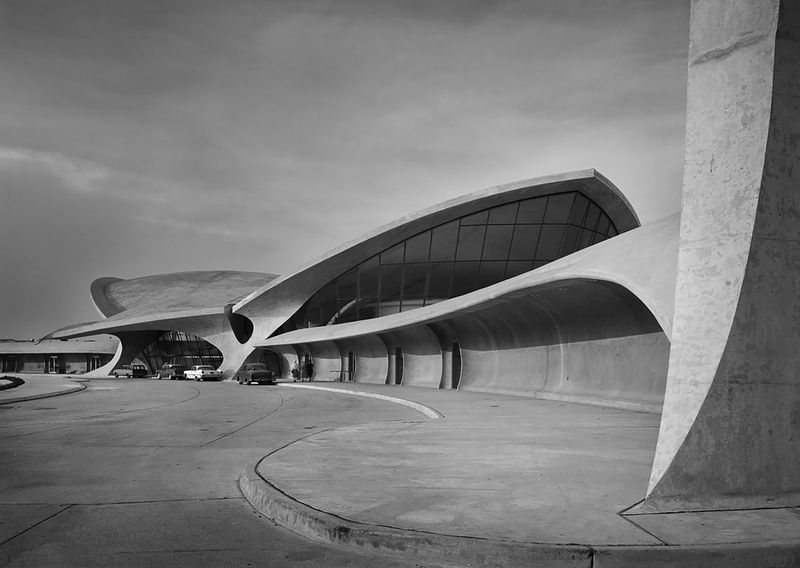
In the heart of New York at JFK Airport, the TWA Flight Center stood as a beacon of 1960s innovation. Designed by the visionary Eero Saarinen, its iconic wing-shaped roof seemed to defy gravity, soaring above the bustling travelers below. The terminal’s unique design was more than just aesthetic; it embodied the spirit of the jet age. Tubular corridors guided passengers like vessels through a futuristic landscape, echoing the era’s fascination with speed and efficiency. The building’s interior was equally captivating, with its open spaces and sweeping lines creating a sense of excitement and possibility. A symbol of progress, the TWA Flight Center was not only a place of transit but an experience in itself, offering a glimpse into a future where air travel was both glamorous and accessible. The terminal remained in use until 2001 and has since been transformed into the TWA Hotel, preserving its architectural legacy.

